Hops in Beer Brewing: Mosaic
Published: July 22, 2025 at 7:00:19 AM UTC
Mosaic hops have transformed the beer brewing world with their distinctive flavor and aroma. Jason Perrault, through his company Select Botanicals and the Hop Breeding Company (HBC), created these hops. Now, they are a favorite among brewers for their versatility. The unique blend of blueberry, tropical fruit, and citrus in Mosaic hops makes them a thrilling addition to many beer styles. This has led brewers to explore new ways to use them, resulting in innovative and complex brews.
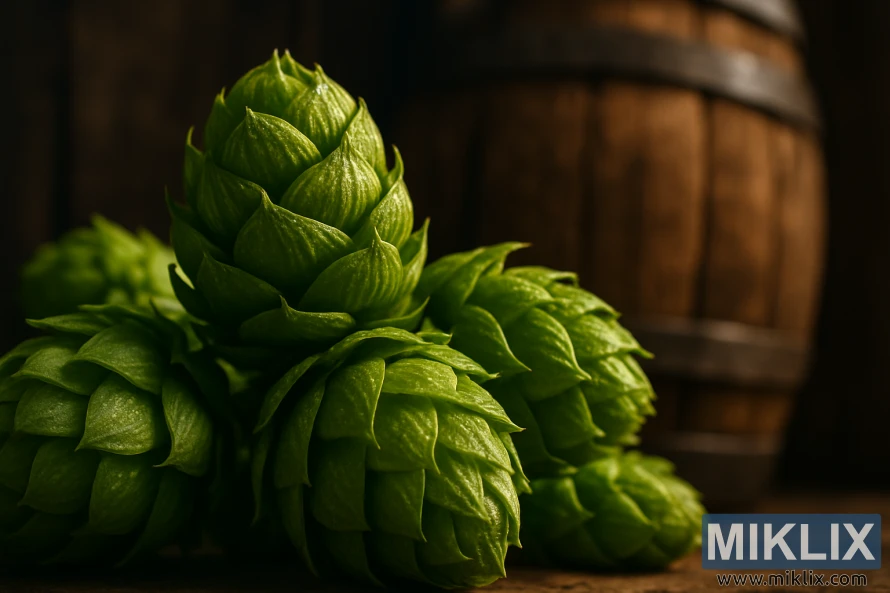
Key Takeaways
- Mosaic hops offer a unique flavor and aroma profile.
- They are a popular choice among brewers due to their versatility.
- Mosaic hops can be used in various beer styles.
- They were invented by Jason Perrault through Select Botanicals and HBC.
- Mosaic hops add notes of blueberry, tropical fruit, and citrus to beers.
Introduction to Mosaic Hops
The Mosaic hop variety, developed by Jason Perrault, has quickly become a favorite among brewers. It was created by the Hop Breeding Company (HBC) and Select Botanicals, starting their breeding program in 2001. Mosaic hops were introduced to the craft brewing world in 2012.
Though relatively new, Mosaic hops have won over brewers with their unique traits. The breeding process involved selecting and crossing various hop varieties. This resulted in Mosaic's distinct flavor and aroma.
The fast acceptance of Mosaic hops is due to their versatility and innovative development. Brewers value the complex flavors and aromas Mosaic hops add to their beers.
Understanding the Mosaic Hop Profile
Mosaic hops are celebrated for their complex and multifaceted profile, captivating brewers globally. Their unique flavor and aroma blend makes them a favorite for various beer styles.
The Mosaic hop profile is marked by a wide range of flavors and aromas. It includes notes of blueberry, tropical fruit, and citrus, giving it a fruity and vibrant character. Floral and earthy undertones also add depth and complexity to its profile.
Brewers can experiment with different techniques to highlight different aspects of the Mosaic hop profile. Adjusting the hopping schedule or brewing temperature can enhance specific flavors and aromas.
Some key characteristics of the Mosaic hop profile include:
- Fruity flavors, such as blueberry and tropical fruit
- Citrus notes that add brightness and refreshment
- Floral and earthy undertones that contribute to the hop's complexity
Understanding the Mosaic hop profile allows brewers to create a wide range of beers. From hoppy IPAs to complex lagers, Mosaic hops are invaluable in many recipes.
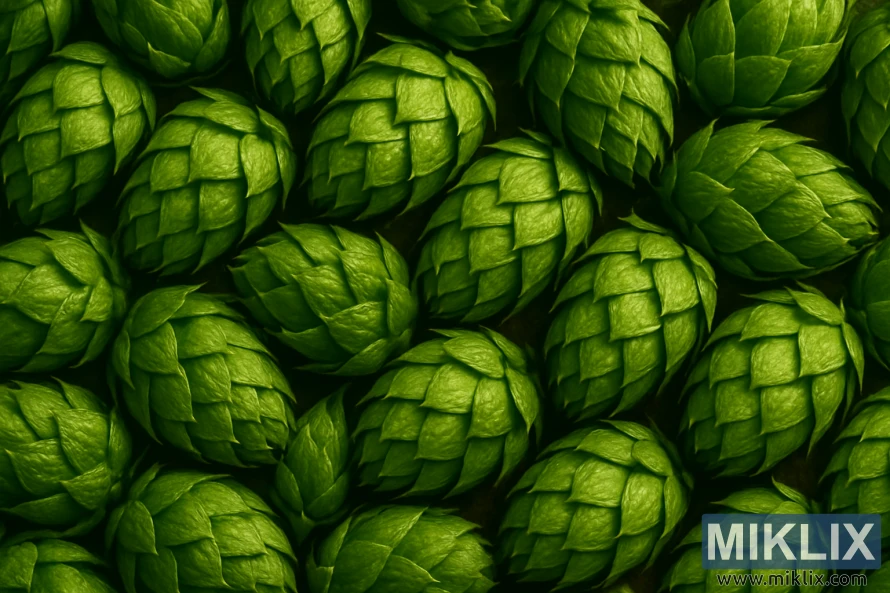
Chemical Composition and Properties
Grasping the chemical makeup of Mosaic hops is key to unlocking their full brewing prowess. These hops boast an alpha acid range of 10.5% to 14%. This makes them ideal for both bittering and adding flavor to beers.
The beta acid content in Mosaic hops is significantly lower, between 3% and 4.5%. This lower beta acid level is a major factor in the distinctive flavor and aroma Mosaic hops bring to beers. The right balance between alpha and beta acids is essential for the hops' character and their effect on brewing.
The chemical structure of Mosaic hops impacts their bitterness, flavor, stability, and storage. Brewers must take these factors into account when choosing and managing Mosaic hops. This ensures the quality and consistency of their beers.
By delving into the chemical composition of Mosaic hops, brewers can refine their techniques. This leads to more consistent and superior brews. Mosaic hops' versatility, paired with their unique chemical properties, makes them a prized ingredient across various beer styles.
Distinctive Aroma Characteristics
Mosaic hops stand out for their unique aroma, featuring notes of blueberry and tropical fruit. This distinctive scent makes them a favorite among brewers. They aim to create beers with complex and intriguing flavors.
Mosaic hops are known for:
- Blueberry notes, which add a sweet and fruity dimension to beers
- Tropical fruit aromas, contributing to a beer's overall fruitiness and depth
- Floral and herbal undertones, which enhance the hop's overall aromatic complexity
The blend of these aroma characteristics allows brewers to craft beers that are both flavorful and aromatic. The blueberry and tropical fruit notes in Mosaic hops complement a variety of beer styles. This makes them versatile for different brewing applications.
When using Mosaic hops, brewers can expect a pronounced aroma. This aroma enhances the beer's overall sensory experience. The unique aroma characteristics of Mosaic hops are a key factor in their popularity and utility in modern brewing practices.
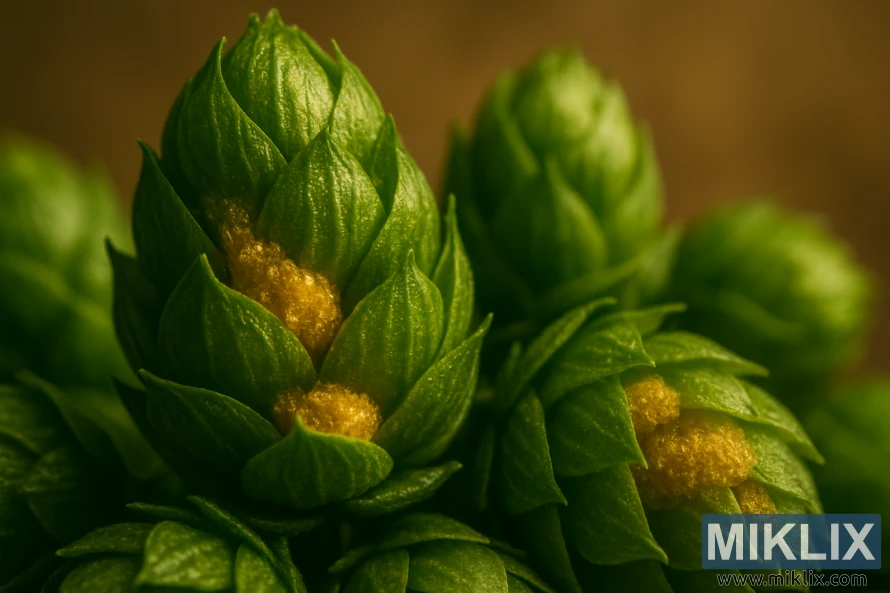
Flavor Profile and Tasting Notes
Mosaic hops bring a unique blend of floral, earthy, and fruity notes to the table. This mix makes them a go-to for brewers aiming to enrich their beers with depth and complexity.
The essence of Mosaic hops lies in their balanced floral and earthy undertones. These elements add a layer of complexity, fitting them for a variety of beer styles. From pale ales to IPAs, they shine.
Key characteristics of Mosaic hops include:
- Floral notes that add a delicate, perfumy quality
- Earthy undertones that provide depth and complexity
- Fruity flavors that enhance the overall hop profile
By using Mosaic hops, craft brewers can craft beers with a rich, nuanced flavor. This appeals to a broad spectrum of palates, making them a favorite among beer enthusiasts.
Best Beer Styles for Mosaic Hops
Mosaic hops are a standout choice for pale ales and IPAs, thanks to their distinctive aroma. Their unique flavor profile makes them a favorite among brewers. They aim to craft complex and refreshing beers.
Mosaic hops are incredibly versatile. Their flavor and aroma characteristics align well with various beer styles. Some of the top beer styles for Mosaic hops include:
- Pale Ales: Mosaic hops bring a bright, citrusy flavor to pale ales. This makes them ideal for brewers seeking a refreshing, hoppy beer.
- IPAs: The complex flavor of Mosaic hops is perfect for IPAs. It adds depth and complexity to the beer.
- Double IPAs: Mosaic hops also excel in double IPAs. Their intense flavor and aroma can truly shine in these beers.
Brewers can explore different beer styles and flavor profiles when using Mosaic hops. This allows them to create unique and delicious beers. By understanding Mosaic hops' characteristics and their use in various beer styles, brewers can expand their creative horizons.
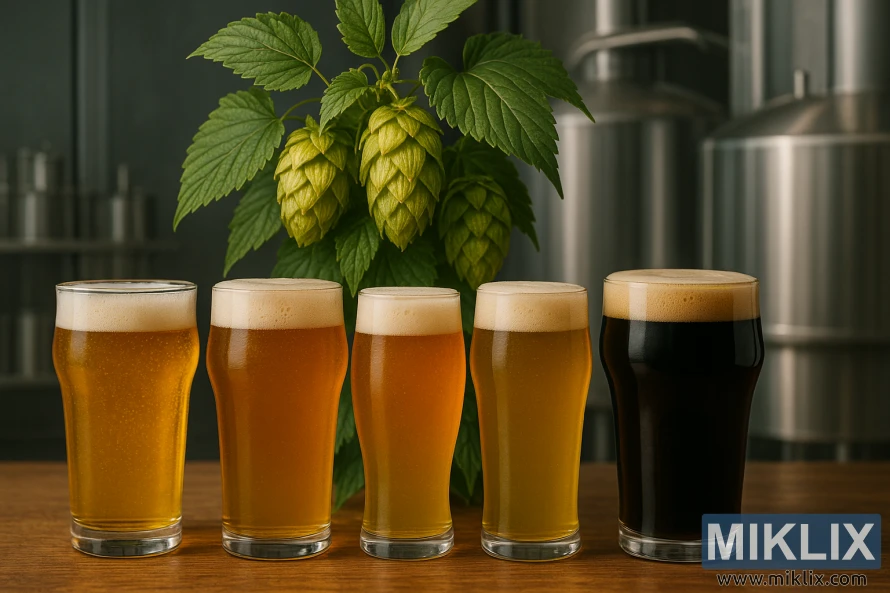
Brewing Techniques with Mosaic Hops
Using Mosaic hops in brewing can significantly alter the final taste and smell. These hops are versatile, appealing to brewers looking to try new methods. Their adaptability makes them a go-to choice for experimenting with different techniques.
Dry hopping is a favored method for Mosaic hops. It involves adding hops to the beer during or after fermentation. This allows the hops to add their flavor and aroma without increasing bitterness. The result is a beer with a rich, balanced taste.
Mosaic hops can also be used in various stages of brewing. Early additions can add bitterness, while later ones enhance flavor and aroma. This flexibility lets brewers experiment with different schedules to achieve their desired beer.
- Use Mosaic hops in late boil additions to preserve delicate flavor and aroma compounds.
- Experiment with different dry hopping durations to find the optimal balance for your beer.
- Consider combining Mosaic hops with other hop varieties to create complex and unique flavor profiles.
Mastering brewing techniques with Mosaic hops opens up a world of possibilities for unique beers. Whether crafting a hoppy IPA or a balanced pale ale, Mosaic hops can help you achieve your flavor and aroma goals.
Pairing Mosaic with Other Hop Varieties
Brewing with Mosaic hops opens up a realm of possibilities. Pairing them with Citra and Simcoe can create complex, intriguing flavors. This combination elevates the taste of beers.
Mosaic hops bring a unique flavor profile. When combined with Citra, they introduce a citrusy, fruity taste. Simcoe adds a piney, earthy note, balancing the flavors. This mix allows brewers to explore various styles, from IPAs to pale ales.
Some popular hop pairing combinations include:
- Mosaic + Citra for a citrus-forward IPA
- Mosaic + Simcoe for a balanced and complex pale ale
- Mosaic + Citra + Simcoe for a layered and full-bodied double IPA
Understanding how different hops complement Mosaic can lead to unique beers. These beers can stand out in the market.
Storage and Handling Requirements
Understanding the right storage and handling of Mosaic hops is key to preserving their unique qualities. These hops, like others, are sensitive to temperature, moisture, and light. Proper care is essential to maintain their flavor and aroma.
For storage, keep Mosaic hops in a cool, dry spot, away from sunlight. The ideal temperature is below 40°F (4°C). Use airtight containers or bags to protect them from air and moisture.
When handling Mosaic hops, it's important to limit air exposure. Oxygen can speed up degradation. Also, handle them gently to avoid physical damage. This can harm their flavor and aroma.
Here are some tips for storing and handling Mosaic hops:
- Store hops in a refrigerator or freezer to keep them fresh.
- Use airtight packaging to block air and moisture.
- Reduce handling to prevent damage.
- Avoid light exposure to prevent degradation.
By adhering to these guidelines, brewers can ensure their Mosaic hops maintain their distinct flavor and aroma. This leads to better-tasting beers.
Common Brewing Challenges and Solutions
Mosaic hops are celebrated for their rich flavor, yet brewers often face hurdles that affect the final taste. The main issue is balancing the hop levels to avoid over- or under-hopping.
Over-hopping can make the beer taste unbalanced, with hop flavors dominating. On the other hand, under-hopping might leave the beer lacking in hop character. To solve this, brewers must adjust hop amounts according to the beer style and desired hop intensity.
Effective brewing techniques are essential for managing Mosaic hops. Dry-hopping can boost the aroma without increasing bitterness. Late-hop additions contribute to both flavor and aroma. Knowing the right timing and quantity of hops is critical for a balanced beer.
Some common strategies for managing Mosaic hops include:
- Carefully measuring hop quantities to avoid over-hopping.
- Adjusting brewing techniques, such as dry-hopping or late-hop additions, to achieve the desired flavor and aroma profile.
- Experimenting with different hop varieties in combination with Mosaic hops to create unique and complex flavor profiles.
By understanding the challenges and using the right brewing strategies, brewers can fully exploit Mosaic hops. This leads to exceptional beers that highlight their unique flavors.
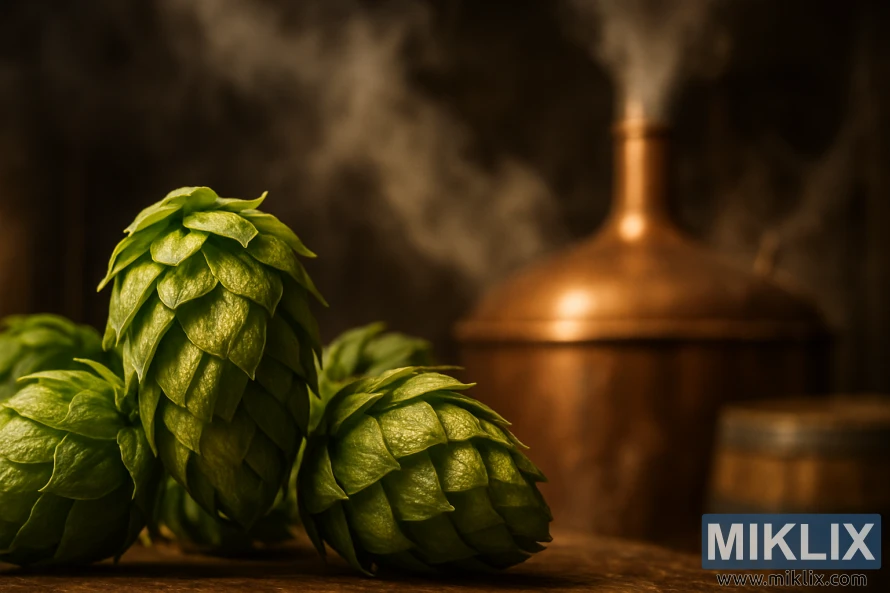
Commercial Examples of Mosaic-Hopped Beers
Mosaic hops have become a staple in many commercial beers, showing their versatility and unique flavor. Founders Mosaic Promise is a notable example, highlighting the distinct characteristics of Mosaic hops.
Founders Mosaic Promise showcases the hop variety's ability to create complex and balanced flavors. This beer demonstrates how Mosaic hops can craft a brew that is both aromatic and flavorful.
Other commercial beers featuring Mosaic hops include:
- Beers with Mosaic as a primary hop, showing its citrus and pine notes.
- IPAs and pale ales that use Mosaic for its aromatic properties.
- Seasonal brews that incorporate Mosaic hops for added depth and complexity.
These examples illustrate Mosaic hops' versatility in brewing. By using Mosaic in their recipes, breweries can create a wide range of beer styles. These appeal to different palates.
Seasonal Considerations for Brewing
Mosaic hops are versatile, fitting into various seasonal brews. They can enhance both refreshing summer ales and hearty winter stouts. Their unique flavor and aroma make them ideal for experimenting with different styles all year.
In summer, Mosaic hops add a citrusy and floral note to beers. They're perfect for session ales, IPAs, and other refreshing styles. The bright, tropical flavors are a great match for warm weather, providing a refreshing taste.
Winter brews, on the other hand, benefit from Mosaic hops' earthy and pine undertones. These add depth and complexity to darker, richer beers like stouts and porters. This versatility makes Mosaic hops a valuable addition to any brewer's hop inventory, regardless of the season.
Some popular seasonal beer styles that utilize Mosaic hops include:
- Summer IPAs with citrus and tropical flavors
- Winter stouts and porters with earthy and pine notes
- Spring session ales with floral and herbal hints
- Autumnal amber ales with balanced hop character
By incorporating Mosaic hops into their seasonal brews, brewers can create a diverse range of beers. These beers appeal to consumers all year round. Whether it's a refreshing summer ale or a hearty winter stout, Mosaic hops provide the flavor and aroma needed to make each beer stand out.
Scaling Recipes with Mosaic Hops
Mosaic hops offer brewers the flexibility to scale their recipes easily. This is a boon for those adjusting recipes for various batch sizes. Whether brewing for a local competition or commercial distribution, this adaptability is invaluable.
The complex flavor and aroma of Mosaic hops, featuring citrus, pine, and tropical fruit notes, are key. Scaling recipes requires understanding how these characteristics will influence the final beer. In small batches, Mosaic hops can introduce a unique twist to classic styles. For larger batches, they ensure consistency and depth of flavor.
Scaling recipes with Mosaic hops involves several considerations. The alpha acid content can vary by crop and storage conditions. It's essential to adjust hop quantities based on alpha acid percentages for the right bitterness. Timing of hop additions also impacts flavor and aroma. Hops for bitterness are added early in the boil, while those for flavor and aroma are added later or during dry-hopping.
Here are steps to follow for scaling recipes with Mosaic hops:
- Determine the batch size and adjust the hop quantity appropriately.
- Consider the alpha acid content of the Mosaic hops and adjust for bitterness.
- Plan hop additions based on the desired flavor and aroma profile.
By adhering to these guidelines, brewers can successfully scale their recipes with Mosaic hops. This applies to both small batches and large commercial batches.
Conclusion
Mosaic hops stand out as a versatile and complex variety, opening up a world of possibilities for brewers. They offer a unique blend of flavors and aromas, allowing brewers to craft beers with complex and balanced profiles. This showcases the full range of what Mosaic hops can bring to the table.
This article has highlighted how Mosaic hops can be used in a variety of beers, from IPAs to pale ales and more. Whether you're an experienced brewer or just starting out, adding Mosaic hops to your recipes can significantly enhance your beers. It introduces a unique twist to traditional styles, making your brews stand out.
By mastering the use of Mosaic hops, you unlock new dimensions of flavor and aroma in your beers. As you progress in your brewing journey, don't hesitate to experiment with different techniques and recipes. Make Mosaic hops a key ingredient to elevate your brewing to new heights.
Further Reading
If you enjoyed this post, you may also like these suggestions:
- Hops in Beer Brewing: Hallertauer Taurus
- Hops in Beer Brewing: Eroica
- Hops in Beer Brewing: Kitamidori
